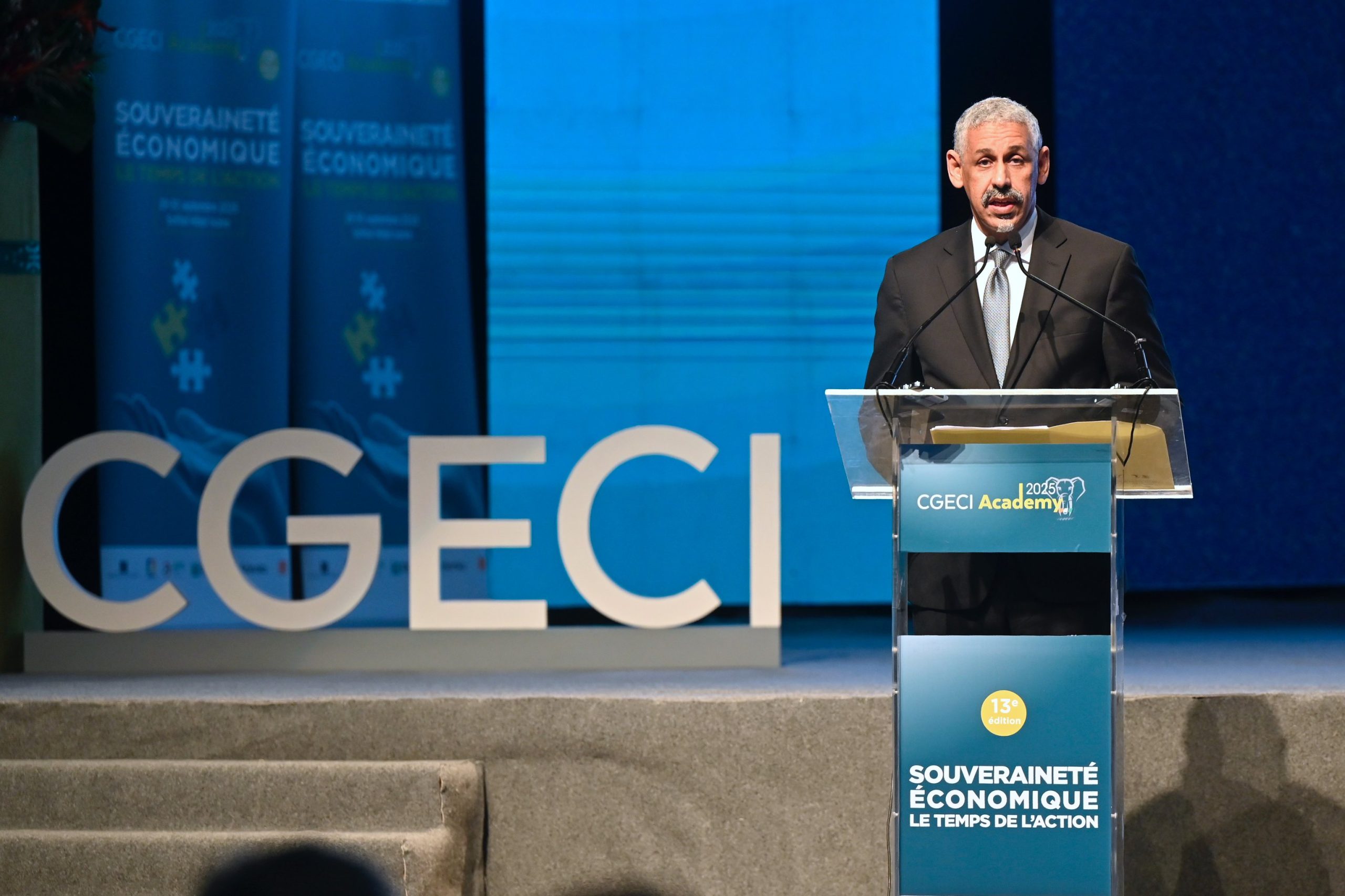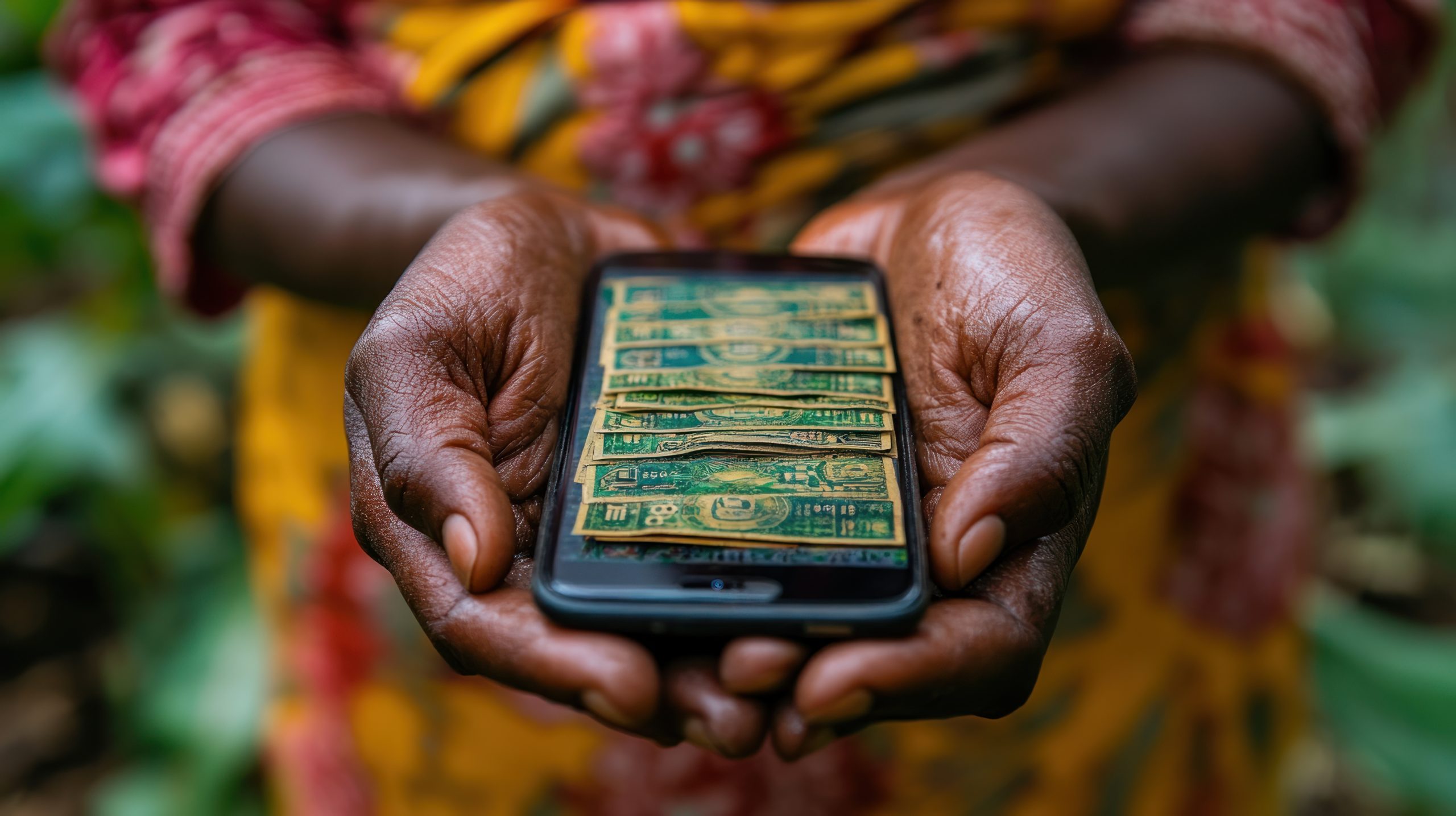Economy
The Impact on G7’s multi-billion dollar plan on Africa’s infrastructure gap

G7 Members (Photo: European Union)
In late June 2022, it was announced at the G7 Summit in Germany that a USD 600 billion lending initiative, the Partnership for Global Infrastructure Initiative (PGII), would be launched to fund infrastructure projects in the developing world, with a particular focus on Africa. The G7 countries – Canada, France, Germany, Italy, Japan, the United Kingdom (UK) and the United States (US) – explained the PGII would help address the infrastructure gap in developing countries.
The US
The US has recently renewed its focus on impact-building and financing strategic, long-term infrastructure projects in Africa, with the Export-Import Bank of the United States (EXIM) supporting infrastructure development on the continent. According to a 2020 report by McKinsey and Company – Solving Africa’s infrastructure paradox – the US accounts for 38% of global investors who have an appetite for African investment, by far the most of any country. In 2021, the US launched a refreshed “Prosper Africa initiative”, focusing on improving reciprocal trade and investments that create jobs and build infrastructure between the two regions. In 2022, the US announced it would mobilise USD 200 billion over the next five years as part of the PGII, in the form of grants, financing and private sector investments. Some deals have already been announced, including, for example, a USD 2 billion solar energy project in Angola, and the building of multiple hospitals in Côte d’Ivoire.
The EU
In February 2022, the European Commission announced investment funding for Africa worth EUR 150 billion. The funding package is part of the EU Global Gateway Investment Scheme and is said to be in the form of EU combined member funds, member state investments and capital from investment banks.
In early 2020, the European Commission published its Comprehensive Strategy with Africa, outlining the region’s plans for its new, stronger relationship with the continent. The strategy document laid out five top priorities for the EU in Africa: the green transition and improving access to energy; digital transformation; sustainable growth and jobs; peace and governance; and migration and mobility.
The UK
The UK is also making a strong play for influence, investment and trade with Africa, post-Brexit. Further to key summits in 2020 and 2021, finance is being redirected into Africa from the UK. In 2022, UK development finance institution (DFI), British International Investment (formerly CDC Group), announced it had exceeded its pledge to invest GBP 2 billion in Africa over the last two years. The UK’s Global Infrastructure Programme helps partner countries (including in the African continent) to build capacity to develop major infrastructure projects, setting up infrastructure projects for success and paving the way for UK companies to support these projects.
Further, in November 2021, it was announced that the governments of South Africa, France, Germany, the United Kingdom and the United States of America, along with the European Union, were in negotiations to form a long-term Just Energy Transition Partnership. The partnership focuses on boosting the decarbonisation of the South African economy, with a commitment of USD 8.5 billion for first round financing. It is expected that 1-1.5 gigatonnes of emissions will be prevented over the next 20 years, assisting South Africa to accelerate its just transition. Discussions are also currently taking place to establish a similar partnership in Senegal.
African solutions
The African Development Bank noted in early 2022 that Africa’s infrastructure investment gap is estimated at more than USD 100 billion per year.
DFIs are increasingly anchoring the infrastructure ecosystem in Africa – serving a critical function for project finance as investment facilitator and a check on capital. DFIs can shoulder political risk and access government protections in a way that others cannot, enter markets others cannot and are uniquely capable of facilitating long-term lending. The large amount of capital needed to fill the infrastructure gap, however, means that DFIs cannot bridge it alone. Private equity, local and regional banks, debt finance and specialist infrastructure funds are primed to enter the market, and multi-finance and blended solutions are expected to grow in popularity as a way to de-risk deals.
The African Union’s 55 member states have stated that their primary funding needs include support in terms of safety and security on the continent, as well help in implementing the African Continental Free Trade Agreement (AfCFTA) and the massive infrastructure investment it needs to be successful. The development of supporting infrastructure is key to boosting AfCFTA’s free trade potential, especially in terms of transportation, energy provision, internet access and data services, education and healthcare infrastructure projects.
Infrastructure projects in Africa now also have a heightened focus on improving Africa’s capacity for green, low-carbon and sustainable development, via, for example, clean energy, community healthcare and support, green transport, sustainable water, wildlife protection and low-carbon development projects. Funding such projects comes with responsibility – projects must not only be bankable and yield attractive returns, but must also be sustainable and provide tangible benefits to local economies and communities. All of Africa’s major partners have noted they will prioritise projects that commit to Environmental, Social and Governance principles, and access to capital for large infrastructure projects is likely to contain sustainability requirements.
That the focus of the PGII is on the sustainability and the social impact of these projects in Africa is further evidenced in the White House briefing room statement issued at the launch in June 2022, where it was stated that the PGII will “mobilize hundreds of billions of dollars and deliver quality, sustainable infrastructure that makes a difference in people’s lives around the world…”
By: Michael Foundethakis, Baker McKenzie’s Global Head of Projects and Trade & Export Finance, and Africa Steering Committee Chair
Economy
Africa must seize global trade disruption as ‘historic opportunity,’ leaders tell private sector

Ivorian Prime Minister Robert Mambé and African Development Bank Group President Sidi Ould Tah have urged Africa’s private sector to take centre stage in the continent’s economic transformation, stressing that the current global trade disruptions present an opportunity rather than a threat.
The two leaders were speaking on Monday at the opening of the 13th edition of the CGECI Academy, the flagship annual forum of Côte d’Ivoire’s employers federation, held under the theme “Economic sovereignty: Time for Action.” The two-day event drew senior government officials, business leaders, and representatives of regional employers’ organisations.
Prime Minister Mambé underscored the urgency of moving beyond analysis to action. “The time for self-analysis is over; it’s now time for action!” he reiterated. “We must become aware of our strengths, our weaknesses and our untapped potential, and most importantly, we must establish a synthesis that consolidates our achievements for new prospects that are based on intelligent and dynamic partnerships.”
He stressed that economic sovereignty requires coordinated effort from government, private investors, young entrepreneurs, and consumers.
Dr Ould Tah echoed this call, telling the gathering that Africa must turn the current global trade tensions into a “historic opportunity” to strengthen regional value chains and process more of its abundant raw materials locally.
“For Africa, this is not a threat; it is a historic opportunity to establish a stronger, more integrated and more resilient local economy,” the Bank President said.
Dr Ould Tah, who assumed office on September 1, outlined his four-pillar strategy for Africa’s development: mobilising large-scale capital, reforming Africa’s financial architecture, accelerating the creation of quality jobs, and building climate-resilient infrastructure with green industrialisation.
He emphasised that structural economic transformation cannot be achieved by governments alone. “They will also come from the African private sector, which must be central to the strategy,” the Bank president said, calling on entrepreneurs to innovate and become major players in global markets.
The gathering comes as multilateral trade frameworks face mounting pressure from protectionist policies and geopolitical tensions. African leaders see the moment as critical for the continent to strengthen intra-African commerce and reduce dependence on external markets.
Ahmed Cissé, president of CGECI, pledged the private sector’s support for continental efforts to restore economic and financial sovereignty through institutional partnerships, including “working closely” with the African Development Bank.
The CGECI, which represents nearly 80 percent of Côte d’Ivoire’s private sector companies, has a long-standing partnership with the African Development Bank to boost youth entrepreneurship. Their joint initiative, La finance s’engage (Finance Commits) has mobilised resources for hundreds of Ivorian start-ups since 2016, including a €1.108 million project that has supported 200 young entrepreneurs, nearly a third of them women.
Economy
How AI could unlock financial services for millions of South Africans?

AI could hold the key to financial inclusion in South Africa — unlocking access, trust, and opportunity for millions still outside the formal banking system
South Africa boasts one of Africa’s most sophisticated financial economies, yet a troubling reality persists beneath the fintech shine. Around 11 million adults remain disconnected from reliable credit, savings options, or formal banking, according to University of Stellenbosch Business School research. Meanwhile, mobile phone ownership has reached an impressive 92% across the country.
This contrast presents a compelling opportunity: where brick-and-mortar banking infrastructure has fallen short, digital technology might succeed. We’re already seeing AI-powered tools make significant headway in financial inclusion across emerging markets. Take the Middle East, where mobile AI platforms now connect people with microloans and help them navigate financial services digitally. Could South Africa follow suit?
Breaking new ground with AI and alternative data
McKinsey & Company research points to an exciting possibility: AI systems that can independently assess creditworthiness and negotiate loan terms on the spot. What makes this approach revolutionary is how these systems can evaluate non-traditional financial indicators—mobile payment patterns, airtime usage, and informal saving habits—where conventional credit scoring models simply don’t work.
“AI has the potential to fundamentally reshape lending models,” explains Tertius De Bruin, Consultant at Johannesburg-based fintech consultancy Elenjical Solutions. “It can bring visibility to communities and individuals who have historically been left out of formal finance—not because of risk, but because of limited data.”
This capability could transform lives – from small business owners in Khayelitsha township to farmers in rural Limpopo – without the barriers of physical bank visits or complicated paperwork.
AI’s impact extends beyond just lending. It can make financial information more accessible, deliver personalised financial education, and help develop digital products suited to local realities—where smartphone access is common but financial literacy often isn’t.
“There’s a growing awareness that AI needs to be both powerful and responsible,” De Bruin notes. “Especially in a country like South Africa, where financial systems carry a legacy of exclusion. The technology must adapt to the people—not the other way around.”
Homegrown innovation with global potential
The South African fintech landscape is buzzing with activity. Companies like Elenjical Solutions are putting AI at the heart of their development strategy. Known for their expertise in capital markets technology and integration with platforms like Murex, they’re investing heavily in AI solutions tailored specifically for financial institutions.
While Elenjical has already developed AI tools, they’re now focusing on practical, market-ready applications. Their AI-assisted SQL query tool helps developers create more efficient statements, whilst their AI log querying assistant interprets system logs and suggest fixes based on technical documentation—particularly valuable in complex banking environments.
“These aren’t speculative R&D projects,” De Bruin emphasises. “They’re aimed at solving real-world pain points for our clients and improving the efficiency of our own teams. We’re combining local understanding with world-class capability.”
Banking the unbanked—a distinctly African approach
Financial exclusion won’t disappear overnight, but the way forward is becoming clearer. Picture a pilot programme where AI agents underwrite microloans for thousands of previously unbanked South Africans. By monitoring repayment patterns over time, these initiatives could build new trust models between lenders and borrowers—without depending on traditional financial histories.
Those outside the banking system don’t need charity—they need tools that recognise their unique circumstances, engage them meaningfully, and actually work for them. AI, designed thoughtfully and expertly, can deliver exactly that. And when combined with deep industry knowledge—as in Elenjical’s specialised innovations—it becomes more than just technology. It becomes essential infrastructure.
“We’re at a pivotal moment,” says De Bruin. “South Africa’s fintech ecosystem is bursting with talent and ideas. The challenge now is to turn that potential into measurable impact—for the entrepreneur in Soweto, the smallholder in the Eastern Cape, or the student in Durban building credit for the first time.”
The true promise of AI isn’t replacing people—it’s reaching them. Building a system where everyone counts. And in doing so, closing a gap that should never have existed in the first place.
Economy
Trump, Trade, and Crypto: Why Bitcoin Will Trigger A Global Financial Reset

The global financial landscape is on the brink of massive change, and as always, crypto is in the eye of the storm. With Donald Trump reclaiming the presidency, we’re not just looking at a political shift – we’re staring down a potential reset of the global monetary system.
For investors, the question isn’t whether to buckle up but how to position portfolios to thrive amid uncertainty. Spoiler alert: Bitcoin and crypto could become the ultimate beneficiaries of this tectonic economic transformation.
Trump’s Big Plans: Weakening the Dollar, Strengthening America
Trump’s policy goals are clear: bring manufacturing back to America, fortify military power, and reindustrialize the economy. But these lofty ambitions come with a heavy price tag and require one key ingredient – money. Lots of it.
How does Trump plan to make America competitive again? By weakening the dollar. Devaluing the greenback against gold or other major currencies makes U.S. exports cheaper and incentivizes companies to move production back home. It’s a bold strategy, but it’s also a double-edged sword that could send ripple effects through global markets.
A weaker dollar means inflationary pressure on other nations. To counter this, countries like China, Japan, and those in the European Union (EU) will likely print more money, further expanding global liquidity. Historically, when fiat currencies flood the market, scarce assets like gold – and increasingly, Bitcoin – become the go-to hedge.
The Global Ripple Effect
Faced with Trump’s trade policies, China will likely respond by printing yuan to stabilize its slowing economy and counteract deflation. However, a weaker yuan could lead to capital flight as wealthy Chinese investors seek safer havens. Bitcoin and other cryptocurrencies stand to benefit as digital lifeboats for escaping capital restrictions.
Japan’s economic relationship with the U.S. means it will follow Trump’s directives to strengthen the yen, making Japanese products more expensive but politically aligning with America. To offset the pain, Japan may inject trillions of dollars into global markets as it unwinds its carry trade, injecting much-needed liquidity into risk assets like crypto.
Europe’s response is less about action and more about survival. As EU leaders face economic stagnation and inflation, they’re turning to financial repression – essentially forcing European savers to fund state projects by restricting investment options. This will likely drive European investors toward decentralized assets like Bitcoin, where their capital can’t be seized or inflated away.
Why Crypto Could Shine Bright
In a world flooded with fiat, Bitcoin’s fixed supply becomes its most attractive feature. Unlike gold, which is tied to physical logistics and geopolitics, Bitcoin is borderless, easily transferable, and increasingly recognized as “digital gold.”
Here’s why the next wave of macroeconomic shifts could catapult crypto:
- Dollar Devaluation: If Trump devalues the dollar, assets like Bitcoin, which are priced in USD, will naturally rise as their purchasing power increases.
- Institutional Inflows: Speculation about governments or institutions holding Bitcoin as a reserve asset – similar to gold – will drive demand higher.
- Global Liquidity Flood: With central banks printing money to maintain economic stability, surplus fiat will flow into scarce digital assets, amplifying crypto’s bull run.
What Could Go Wrong?
Crypto’s path to glory isn’t without obstacles. A few bumps on the road could include:
- Regulatory Clamps: Governments might tighten regulations on crypto to curb capital flight or protect their fiat systems.
- Market Timing Missteps: Investors betting on short-term price movements could get caught in bouts of volatility, especially around Trump’s inauguration in January 2025.
- Overreliance on Liquidity: If central banks mismanage liquidity injections, it could lead to deflationary shocks, hurting all risk assets, including crypto.
How Investors Can Prepare
Navigating the intersection of macroeconomics and crypto requires a mix of patience and strategy. Investors should consider:
- HODL Mentality: Long-term crypto holders tend to outperform those trying to time the market. Bitcoin’s scarcity and growing adoption remain its most compelling long-term value drivers.
- Diversification: Altcoins in emerging narratives like decentralized finance (DeFi) and science (DeSci) could offer outsized returns as liquidity spills over into speculative assets.
- Buying the Dip: Expect volatility, especially around major political milestones like Trump’s inauguration. Savvy investors should use these moments to accumulate.
The world is shifting. Fiat currencies are set to lose purchasing power as central banks scramble to maintain control in the face of rising debt, trade imbalances, and political demands. For Bitcoin, this is a golden – or digital – opportunity.
While we’re unlikely to see a smooth ride to $120,000 or beyond, the macroeconomic winds are clearly blowing in crypto’s favor. As Trump’s policies push the world toward a new monetary system, Bitcoin is emerging not just as a hedge but as a cornerstone of the financial future.
For investors willing to stomach the volatility, the rewards of riding this wave could be nothing short of transformational.
Written by: Heath Muchena, founder of Proudly Associated and author of Tokenized Trillions and Blockchain Applied.
-

 Oil and Gas2 days ago
Oil and Gas2 days agoTotalEnergies, Chevron Push for Faster Permits, Better Seismic Data in Africa
-

 Afripreneur8 hours ago
Afripreneur8 hours agoRevolutionizing Cross-Border Payments in Africa: An Exclusive Interview with Onyinye Olisah
-

 Energy2 days ago
Energy2 days agoUnited States (U.S.) Political Will, African Reforms Signal New Era for Energy Investment

















